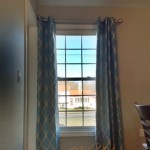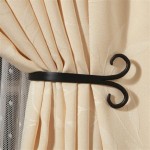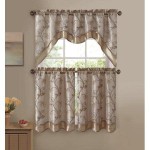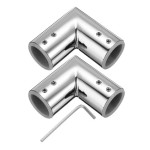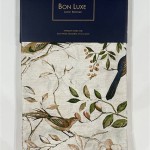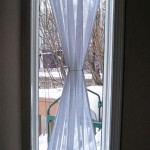What is the Heaviest Gauge Shower Curtain Liner?
Shower curtain liners serve a vital function in bathrooms, protecting the shower curtain and the bathroom floor from water damage. They come in various materials, thicknesses, and sizes, with the thickness often referred to as the gauge. Understanding the gauge of a shower curtain liner is crucial for selecting a product that is durable, effective, and long-lasting. This article explores the concept of gauge in shower curtain liners, discusses the factors influencing the perceived “heaviest” gauge, and provides insights into choosing the right liner for different needs.
The term "gauge" refers to the thickness of the plastic material used to manufacture the shower curtain liner. A higher gauge number generally indicates a thicker, more substantial liner. However, relying solely on the gauge number can be misleading, as the material composition also significantly affects the overall weight, drape, and performance of the liner. Common materials include vinyl (PVC), PEVA (polyethylene vinyl acetate), EVA (ethylene vinyl acetate), and fabric.
While a higher gauge typically correlates with increased durability and reduced billowing, it is essential to consider the specific material when determining the overall quality and suitability of a shower curtain liner. For example, a higher gauge PEVA liner might still be less durable than a lower gauge vinyl liner due to the inherent properties of the materials themselves.
Understanding Gauge Measurements and Material Types
The gauge of a shower curtain liner is usually expressed in mils, where one mil equals one-thousandth of an inch (0.001 inch). For instance, an 8-gauge liner is 0.008 inches thick. Generally, shower curtain liners range from about 3 gauge to 12 gauge. Liners thicker than 12 gauge are often considered heavy-duty or commercial grade.
Vinyl (PVC) liners are known for their durability and resistance to water. They are generally less expensive but can contain potentially harmful chemicals, leading some consumers to seek alternatives. The gauge of vinyl liners often ranges from 6 to 12 gauge. A higher gauge vinyl liner provides greater water resistance and durability, making it less prone to tearing or developing mildew.
PEVA and EVA liners are considered more environmentally friendly alternatives to vinyl. They are chlorine-free and often odorless. PEVA liners tend to be less expensive than EVA liners, but they may also be less durable. The gauge of PEVA and EVA liners typically ranges from 3 to 8 gauge. While a higher gauge PEVA or EVA liner can improve its durability, it may still not match the robustness of a comparable gauge vinyl liner.
Fabric liners, usually made of materials like polyester or nylon, offer a different approach to water resistance. These liners are often treated with a water-repellent coating to prevent water from soaking through. While fabric liners may not be measured in gauge like plastic liners, their thickness and weave density contribute to their overall performance. High-quality fabric liners can provide excellent water protection and aesthetic appeal, but they require regular washing to prevent mildew growth.
Factors Influencing the Perception of "Heaviest" Gauge
While the gauge number provides a numerical indication of thickness, several factors contribute to the overall perception of a shower curtain liner's weight and heft. These include the material density, the presence of weights or magnets, and the overall construction of the liner.
Material density plays a significant role in how heavy a liner feels and how well it drapes. Vinyl, for example, is a denser material than PEVA, so a vinyl liner of the same gauge as a PEVA liner will feel heavier and hang better. The density of the material directly affects how the liner resists billowing and clings to the tub or shower walls.
Many shower curtain liners incorporate weights or magnets at the bottom to help keep the liner in place and prevent it from billowing outwards. These additions can significantly increase the perceived weight of the liner and improve its overall performance. Weights are often small metal pellets sewn into the bottom hem, while magnets are typically embedded along the bottom edge to adhere to a metal tub.
The construction of the liner also contributes to its perceived heaviness and durability. Features such as reinforced grommets, a double-stitched header, and a weighted hem can enhance the liner's overall quality and longevity. Liners with these features are generally more robust and less likely to tear or succumb to wear and tear.
Choosing the Right Gauge for Different Needs
Selecting the appropriate gauge of shower curtain liner depends on several factors, including the frequency of use, the desired level of water protection, and budget considerations. For a frequently used shower, a thicker, more durable liner is generally recommended.
For households with children or pets, a heavier gauge vinyl liner may be the most suitable option. Vinyl liners are generally more resistant to tearing and punctures, making them ideal for high-traffic bathrooms. Choosing a liner with reinforced grommets and a weighted hem can further enhance its durability and prevent accidental damage.
In bathrooms with good ventilation, a lighter gauge PEVA or EVA liner might be sufficient. These liners are often more affordable and environmentally friendly, making them a good choice for less frequently used showers. However, it is essential to ensure that the bathroom is adequately ventilated to prevent mildew growth, as these materials may be more susceptible to moisture accumulation than vinyl.
For individuals seeking a more luxurious and aesthetically pleasing option, a fabric liner with a water-repellent coating can provide excellent water protection and a stylish look. While fabric liners may require more maintenance than plastic liners, they can significantly enhance the overall appearance of the bathroom. Regular washing and occasional re-treatment with a water-repellent spray can help maintain their performance and prevent mildew growth.
Budget also plays a significant role in the selection process. Heavier gauge liners are generally more expensive than lighter gauge liners, so it is essential to consider the trade-offs between cost and durability. Investing in a higher-quality liner can often be more cost-effective in the long run, as it will likely last longer and require less frequent replacement.
In conclusion, while a higher gauge number generally indicates a thicker shower curtain liner, the "heaviest" gauge is best understood in relation to the material composition, construction features, and individual needs. By considering these factors carefully, consumers can make informed decisions and select a shower curtain liner that provides optimal water protection, durability, and value.

Amazerbath Heavy Duty Shower Curtain Liner 12 Gauge 72 X 84 Inches Clear With 3 Stones And Grommet Holes Weighted

Zenna Home 72 In X Heavyweight 10 Gauge Vinyl Shower Curtain Liner White 71130ywht

Extra Heavy 10 Gauge Peva Non Toxic Shower Curtain Liner With Metal Grommets

Amazerbath Heavy Duty Shower Curtain Liner 12 Gauge 72 X 84 Inches Clear With 3 Stones And Grommet Holes Weighted

Zenna Home 72 In X Heavyweight 10 Gauge Vinyl Shower Curtain Liner White 71130ywht

Amazerbath 12g Thickest Shower Curtain Liner Clear Crystal

Amazerbath Heavy Duty Shower Curtain Liner 12 Gauge 72 X 84 Inches Clear With 3 Stones And Grommet Holes Weighted

My Thoughts On The Amazerbath 12 Gauge Heavy Duty Clear Shower Curtain Liner Youtube

Custom Bedding Fashion Window Treatments

Amazerbath Heavy Duty Shower Curtain Liner 12 Gauge 72 X 84 Inches Clear With 3 Stones And Grommet Holes Weighted


